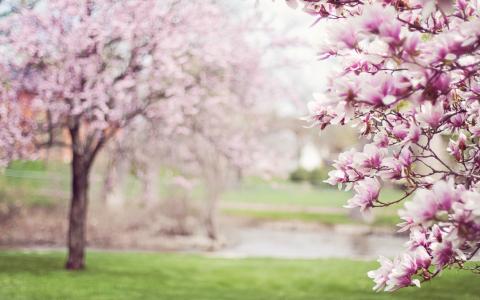
(Ladders) When you cannot enjoy the benefits of going outside at work, bring the outside indoors and get yourself a houseplant for your office. Their vibrant leaves not only perk up your dreary desk, but they are proven to give you a much-needed breath of fresh air. Unlike us, plants can absorb harmful gasses from the air and trap them in their roots.
Back in 1989, NASA and the Associated Landscape Contractors of America identified the best plants for purifying indoor air filled with harmful air pollutants like benzene, trichloroethylene, and formaldehyde, which are key for offsetting sick building syndrome.
Here are NASA-approved houseplants you can get to purify your stuffy office that will not require much thought to care for:
1. Varigated snake plant (Sansevieria)
Also called mother-in-law’s tongue, these spiky plants are the best for beginners who have black thumbs and kill plants regularly because they can withstand deep neglect. Take it from someone who forgot to water hers before a long vacation. Forget to water your snake plant for weeks? It will forgive you. Put your snake plant under fluorescent lights away from a window? It can handle it. These low-maintenance plants require little light and not much water to survive.
And while we’re neglecting them, they are making it easier for us to breathe. In the NASA study, they had a high chemical removal rate. Snake plants can absorb formaldehyde, a toxic agent found in paper bags and synthetic fibers that can give us itchy noses and scratchy throats at work.
While most plants absorb carbon dioxide and release oxygen during the day, snake plants do this process at night, making them a good choice if your home office also doubles as your bedroom.
Pollutants removed: benzene, formaldehyde, trichloroethylene, and xylene
2. English ivy (Hedera helix)
English ivy plants are fast-growing climbers and air-purifying powerhouses. The NASA study found they were especially effective at absorbing benzene, a toxic agent found in plastics and tobacco smoke that can give us headaches. They can thrive in indirect window sunlight.
Pollutants removed: benzene, formaldehyde, trichloroethylene, and xylene
3. Peace lily (Spathiphyllum)
A plant that can bloom right by your computer monitor, peace lilies can purify five of the most dangerous toxins to us while brightening our view. They grow best in shady spots.
Just remember to keep this plant out of reach of curious children and pets. The leaves can be poisonous.
Pollutants removed: ammonia, benzene, formaldehyde, xylene, and trichloroethylene
4. Spider plant (Chlorophytum comosum)
Spider plants are another resilient plant that can tolerate your neglect. They prefer bright light but will tolerate you leaving them in less than ideal conditions.Pollutants removed: xylene, formaldehyde
5. Barberton daisy (Gerbera jamesonii)
The Barberton daisy was among the top three plants in the NASA study that had the best surface area to chemical removal rate ratio (snake plants and English ivies were the other two). This flowering plant comes in a number of sizes and colors.
Pollutants removed: formaldehyde, xylene, trichloroethylene
6. Red-edged dracaena (Dracaena marginata)
Also called the Madagascar dragon tree, red-edged dracaena plants are easy to care for and can grow up to 15-feet high. They excel at producing oxygen while filtering out dangerous air pollutants. Keep them out of sight of your pets, though. They are extremely poisonous to cats and dogs.
Pollutants removed: benzene, formaldehyde, trichloroethylene, and xylene.



